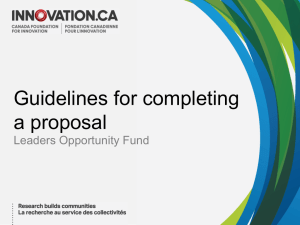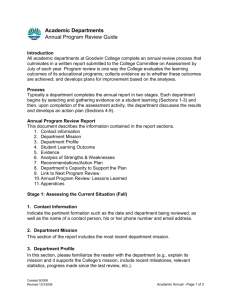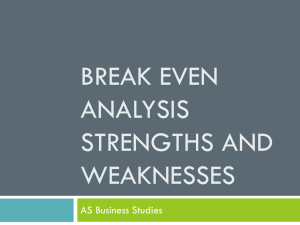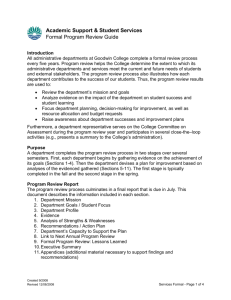(JELF) Reviewer Report Form - Research at St. Michael`s Hospital
advertisement
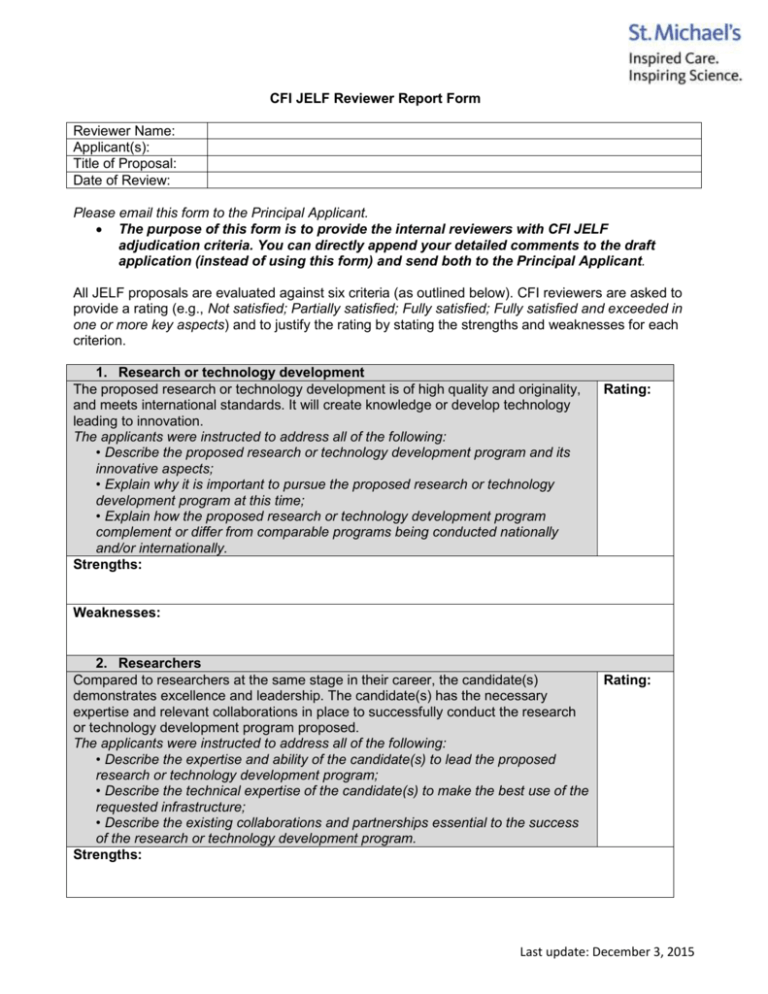
CFI JELF Reviewer Report Form Reviewer Name: Applicant(s): Title of Proposal: Date of Review: Please email this form to the Principal Applicant. The purpose of this form is to provide the internal reviewers with CFI JELF adjudication criteria. You can directly append your detailed comments to the draft application (instead of using this form) and send both to the Principal Applicant. All JELF proposals are evaluated against six criteria (as outlined below). CFI reviewers are asked to provide a rating (e.g., Not satisfied; Partially satisfied; Fully satisfied; Fully satisfied and exceeded in one or more key aspects) and to justify the rating by stating the strengths and weaknesses for each criterion. 1. Research or technology development The proposed research or technology development is of high quality and originality, and meets international standards. It will create knowledge or develop technology leading to innovation. The applicants were instructed to address all of the following: • Describe the proposed research or technology development program and its innovative aspects; • Explain why it is important to pursue the proposed research or technology development program at this time; • Explain how the proposed research or technology development program complement or differ from comparable programs being conducted nationally and/or internationally. Strengths: Rating: Weaknesses: 2. Researchers Compared to researchers at the same stage in their career, the candidate(s) demonstrates excellence and leadership. The candidate(s) has the necessary expertise and relevant collaborations in place to successfully conduct the research or technology development program proposed. The applicants were instructed to address all of the following: • Describe the expertise and ability of the candidate(s) to lead the proposed research or technology development program; • Describe the technical expertise of the candidate(s) to make the best use of the requested infrastructure; • Describe the existing collaborations and partnerships essential to the success of the research or technology development program. Strengths: Rating: Last update: December 3, 2015 Weaknesses: 3. Need for infrastructure The infrastructure is necessary and appropriate to conduct the research or technology development program. In cases where the infrastructure will not be fully used by the candidate(s), the institution has developed plans to maximize its utilization within and/or outside the institution. The applicants were instructed to address all of the following: • Describe the requested infrastructure and how it will enable the proposed research or technology development program; • Explain how the infrastructure will be fully utilized by the candidate(s) and other users (if applicable); • Identify similar infrastructure available within the institution, the region and the country; • Describe the value added of an additional award in cases where a candidate has previously received a CFI award. Strengths: Rating: Weaknesses: 4. Training of highly qualified personnel (HQP) The infrastructure requested will create or enrich an environment promoting the attraction of high-quality trainees. This environment will help impart new high-level skills to HQP and adequately prepare them for research and other careers. The applicants were instructed to address all of the following: • Describe how the infrastructure would enhance the current training environment for HQP in this area; • Describe how the proposed infrastructure will better prepare HQP for research and other careers. Strengths: Rating: Weaknesses: 5. Benefits to Canadians The research or technology development program has the potential to lead to tangible benefits for society, health, the economy and/or the environment. There are measures in place to transfer the research results and outputs of the technology development to potential end users in a timely manner. The applicants were instructed to address all of the following: • Beyond the creation of new knowledge and the training of HQP, describe the expected benefits to Canadians and why they are significant; • Identify potential end users of the research or technology development results and describe the plans for knowledge mobilization and/or technology transfer. Rating: Last update: December 3, 2015 Strengths: Weaknesses: 6. Institutional commitment and sustainability The institution has made, and will continue to make tangible and significant commitments in support of this area of strategic priority leading to the attraction and/or retention of key personnel. The proposed infrastructure will be effectively operated and maintained for its useful life. In completing this section, applicants were asked to refer to the tables in the section entitled Financial resources for operation and maintenance. The applicants were instructed to address all of the following: • Describe how the proposed project is of importance to the institution and the tangible contributions the institution has made or will make in support of this established area of strategic priority; • Describe the operating and maintenance needs of the infrastructure over its useful life; • Outline sources of support for operation and maintenance costs and explain the contingency plans should any of this support become unavailable; • Describe how the requested infrastructure will help attract or retain excellent researchers who will advance the institution's capacity in this area. Strengths: Rating: Weaknesses: Recommendation, budget and general comments The reviewer recommends funding Yes or No The reviewer recommends funding for all budget Yes or No items If applicable, budget items that should not be funded General comments on the proposal: Last update: December 3, 2015

